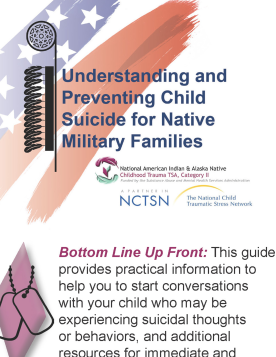
Understanding and Preventing Child Suicide for Native Military Families
Provides practical information to help start conversations with children who may be experiencing suicidal thoughts or behaviors.
September was first declared as National Suicide Prevention Awareness Month in 2008. Since then, September has been a time to acknowledge those affected by suicide, raise awareness, and connect individuals with suicidal ideation to treatment services. According to the CDC, each year more than 41,000 individuals die by suicide, leaving behind friends and family members to navigate the tragedy of their loss. Suicide is the 10th leading cause of death among adults in the U.S. and the 2nd leading cause of death among people aged 10-24 and these rates are increasing.
The National Child Traumatic Stress Network (NCTSN) has compiled a list of helpful resources for parents and caregivers, children and teens, mental health providers, educators and school staff, and policy makers.

Provides practical information to help start conversations with children who may be experiencing suicidal thoughts or behaviors.
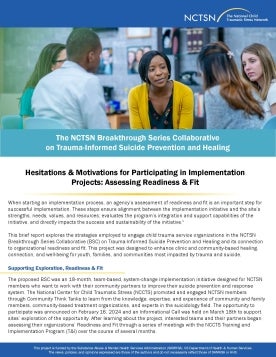
Explores strategies used to engage child trauma service organizations in the NCTSN Breakthrough Series Collaborative (BSC) on Trauma-Informed Suicide Prevention and Healing, emphasizing the importance of organizational readiness and fit.
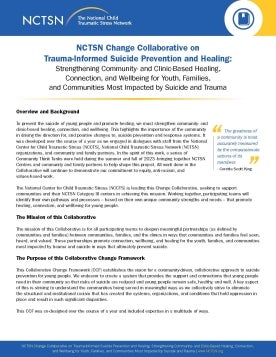
Highlights the importance of the community in driving the direction for, and positive changes to, suicide prevention and response systems.
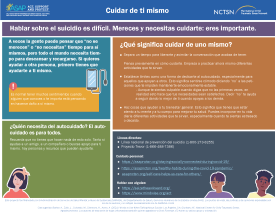
Cuidar de uno mismo: ofrece información para ayudar a los jóvenes a cuidarse a sí mismos. Esta hoja informativa incluye información sobre lo que significa cuidarse uno mismo, además de recomendaciones de líneas directas de ayuda y temas para estimular la conversación.
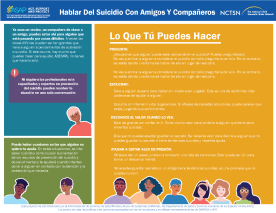
Cómo hablar del suicidio con amigos: ofrece información de respaldo para jóvenes que conversan sobre suicidio con amigos y pares.
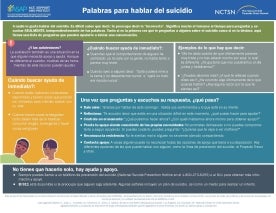
Con qué palabras hablar del suicidio: ofrece información para ayudar a los jóvenes a saber qué vocabulario usar cuando hable del suicidio con amigos y pares. Esta hoja informativa incluye detalles sobre cuándo se debe preguntar, ejemplos de qué decir, cuándo buscar ayuda y qué hacer después.

Offers military parents information about military youth suicide.
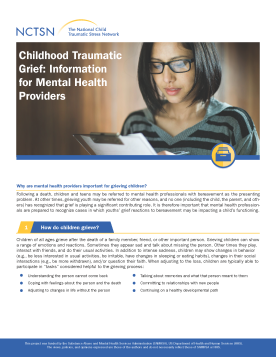
Offers information on why mental health providers are important for grieving children. This fact sheet outlines how children grieve, what Childhood Traumatic Grief is...
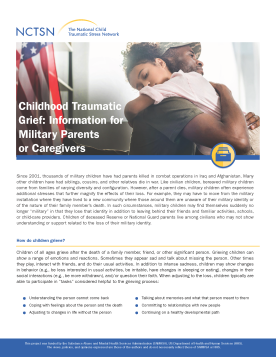
Provides information to military parents and caregivers on Childhood Traumatic Grief.
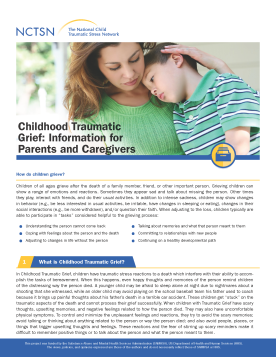
Provides information to parents and caregivers on Childhood Traumatic Grief.
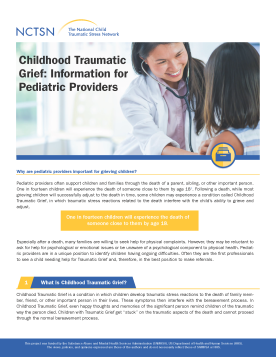
Offers information on why pediatric providers are important for grieving children.
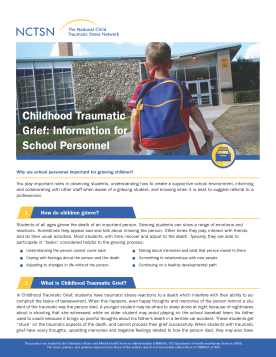
Offers information on why school personnel are important for grieving students. This fact sheet outlines how children grieve, what Childhood Traumatic Grief is, who develops Childhood Traumatic Grief, what traumatic stress reactions in Childhood Traumatic Grief can look like, the signs a student